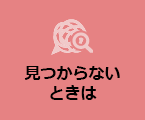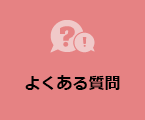Exhibition Rooms of the Togariishi Museum of Jomon Archaeology(Togariishi Jomon Koukokan)【尖石縄文考古館】
What kinds of things are exhibited?: outline of the exhibition
The Togariishi Museum of Jomon Archaeology was built as the information center of the park on the Togariishi site which is one of the Japan's special historic sites.
The museum exhibits over 2,000 splendid archaeological materials excavated from such Jomon sites, including the two national treasures "Dogu" ("Jomon no Venus"[the Venus of Jomon] and "Kamen no Megami" [the Masked Goddess]), and various pottery and lithics.
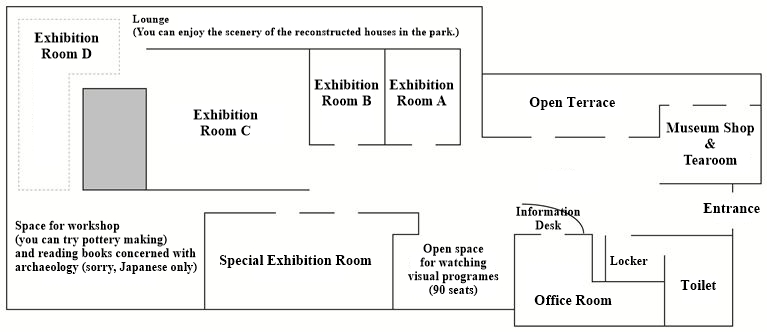
Floor map of the Togariishi Museum of Jomon Archaeology
Those materials are exhibited in 4 rooms.
The materials from the Togariishi site which is one of the Japan's special historic sites are exhibited in the room A.
Two national treasures are exhibited in the room B.
The materials from various Jomon sites in Chino are exhibited in the room C.
We also prepare the place where the visitors can experience Jomon way of life such as making pottery, fire-making and nuts-cracking etc. And we also prepare visual programs and books concerning Jomon culture (Sorry: both visual programs and books are available only in Japanese).
We would be grateful if you could put use service of experiencing Jomon life, or simply visit and enjoy.
Visitors can take photo of the exhibited materials except for those with marks as follows:
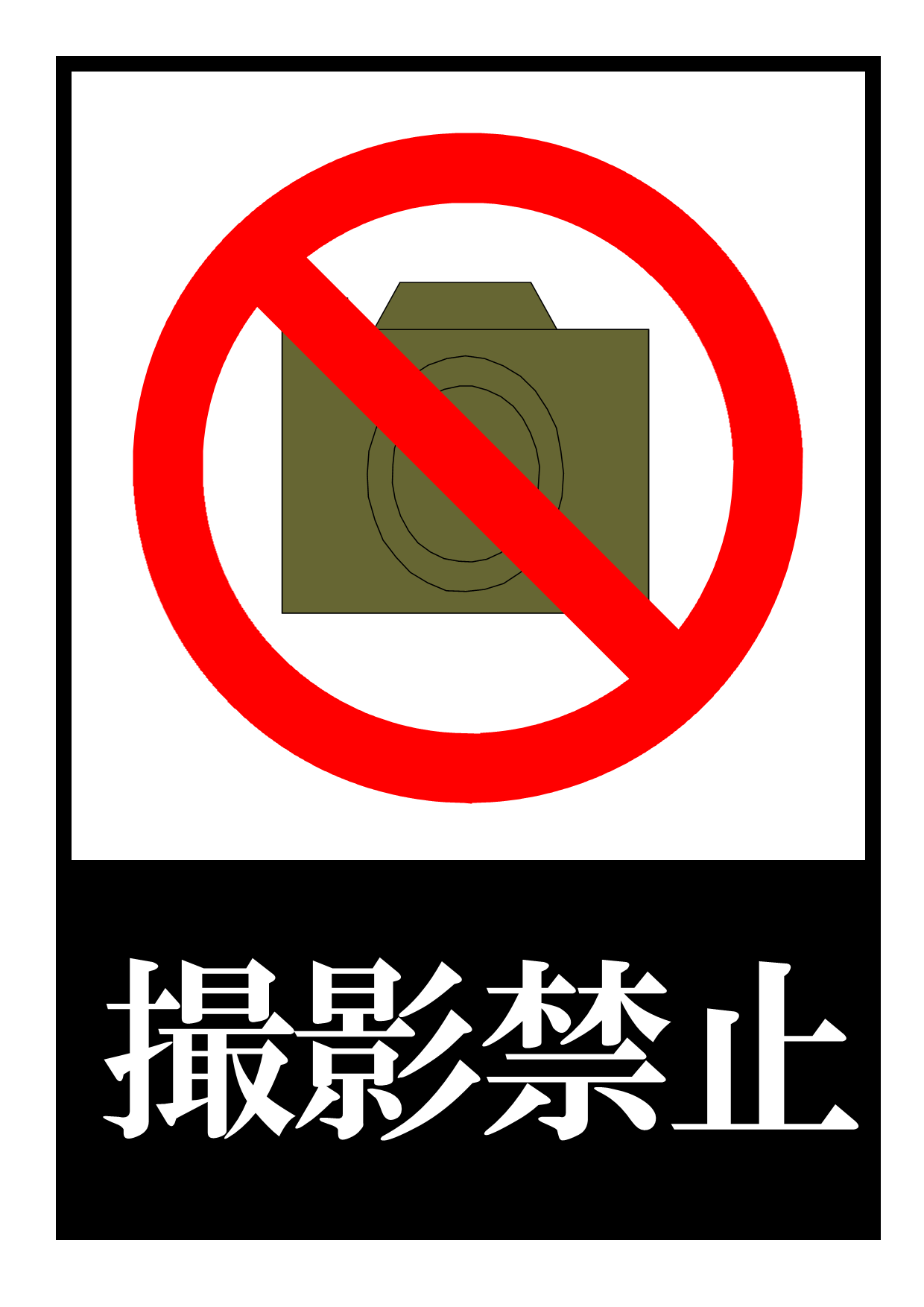
Exhibition Room A: The Togariishi Site
The exhibition room A shows the history of the research of the Togariishi site. The researches of this site had revealed a certain pattern of the settlement of the Jomon period first ever in Japan.
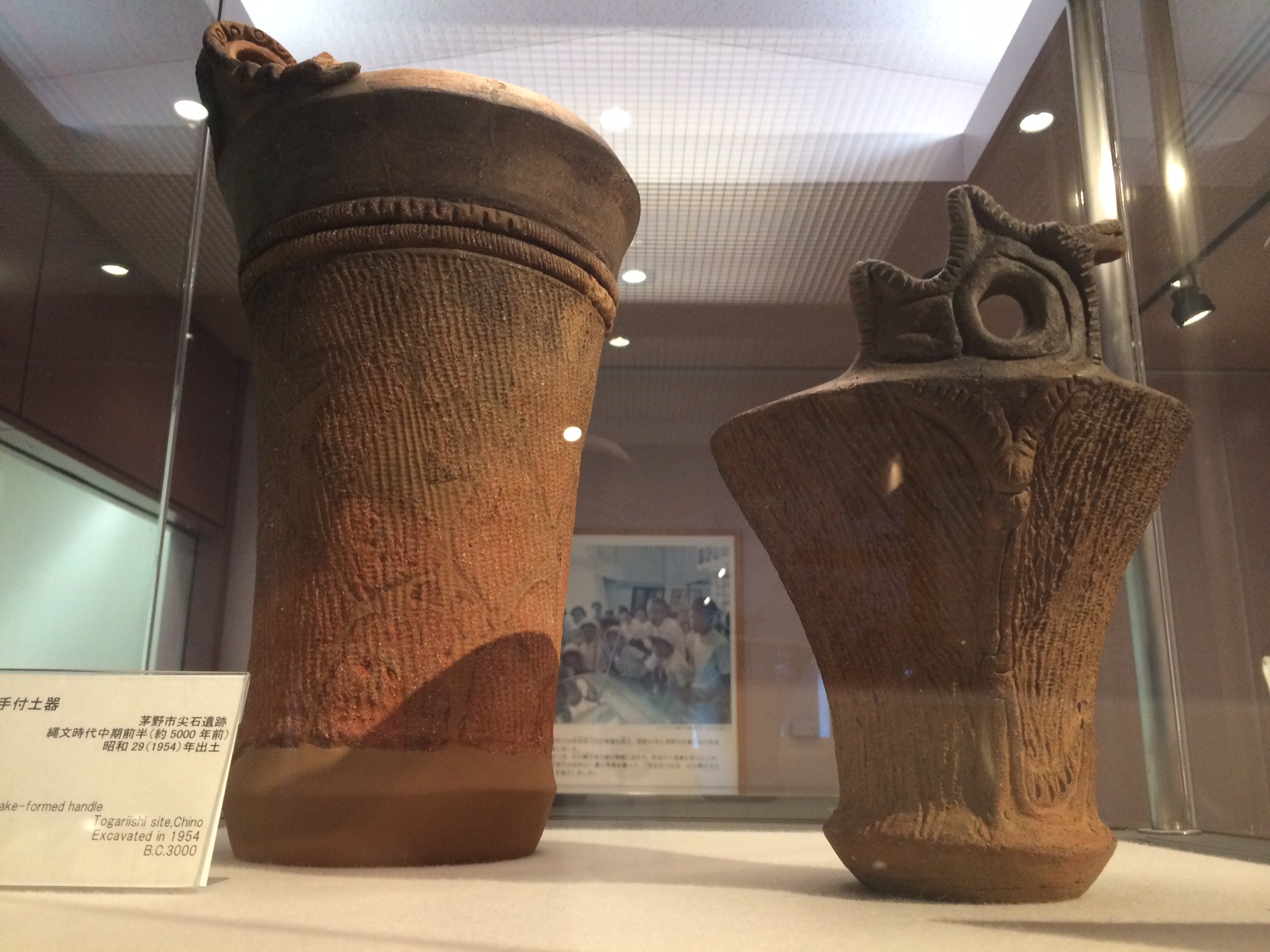
The pottery with snake-shaped decoration from the Togariishi site in the exhibition room A.
Brief history of the researches by Mr. Miyasaka Fusakazu
Discovery of the Togariishi site [PDF/240KB]
The researcher: Mr. Miyasaka Fusakazu part1 [PDF/121KB]
The researcher: Mr. Miyasaka Fusakazu part2 [PDF/148KB]
The researcher: Mr. Miyasaka Fusakazu part3 [PDF/186KB]
The researcher: Mr. Miyasaka Fusakazu part4 [PDF/182KB]
The researcher: Mr. Miyasaka Fusakazu part5 [PDF/157KB]
The researcher: Mr. Miyasaka Fusakazu part6 [PDF/194KB]
The researcher: Mr. Miyasaka Fusakazu part7 [PDF/227KB]
Large-sized pottery excavated in 1942 part1 [PDF/1.68MB]
Large-sized pottery excavated in 1942 part2 [PDF/1.96MB]
Settlement in the Middle Jomon of the Togariishi site
Settlement of the Togariishi site part1 [PDF/263KB]
Settlement of the Togariishi site part2 [PDF/112KB]
Settlement of the Togariishi site part3 [PDF/264KB]
Exhibition Room B: National Treasure Dogu
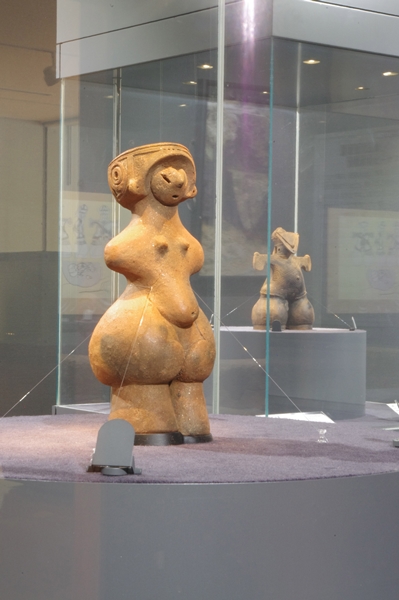
Two national treasure dogus in the room B. If you want detail information of these dogus, please click the links below: National Treasure "Dogu" part 1 and 2.
- National Treasure "Dogu" part 1:"Jomon no Venus" (the Venus of Jomon)
- National Treasure "Dogu" part 2: "Kamen no Megami"(the Masked Goddess)
Exhibition Room C: Jomon Culture around the Mt. Yatsugatake
In exhibition room C, you can see the chronological change of the Jomon pottery, splendid modelling of the Jomon pottery and the transpotation of some materials such as obsidian and jade beads.
Chronological Change of the Jomon Pottery
Jomon period is considered to be neolithic period in Japanese archipelago. The Jomon period followed the Palaolithic period (the Late Palaolithic period) and was followed by the Yayoi period introduced farming from the ancient China. The Jomon period began around 13,000 years B.P. and ended around 2,300 years B.P.. The patterns drawn on pottery's surface and assemblage of the pottery changed over and over during such long time of the Jomon period.
Palaolithic to Jomon [PDF/253KB]
Age of the Jomon period and pottery change [PDF/274KB]
More detail information concerning the Jomon period
Splendid Pottery of the Jomon

The splendid decorated pottery from Shimonohara site. One of the main features in the room C.
Pottery for Ceremony [PDF/391KB]
Food Procurement and the Transportation of Some Materials
Entirely, the Jomon people were considered to be hunter-gatherer-fishers. Howevere, recent studies tell some possibilities of the cultivation of various beans. Further research will confirm such possiblities.
The Jomon people lived in nature [PDF/208KB]
Materials transported into Chino [PDF/528KB]
Obsidian Source of Tsumetayama [PDF/364KB]
Wide Distribution [PDF/221KB]
Exchange the goods and the informations [PDF/252KB]
Obsidian caches around Mt. Yatsugatake [PDF/252KB]
The route of the obsidian procurement [PDF/512KB]
You Can See the Reconstructed Jomon Houses from the Lounge
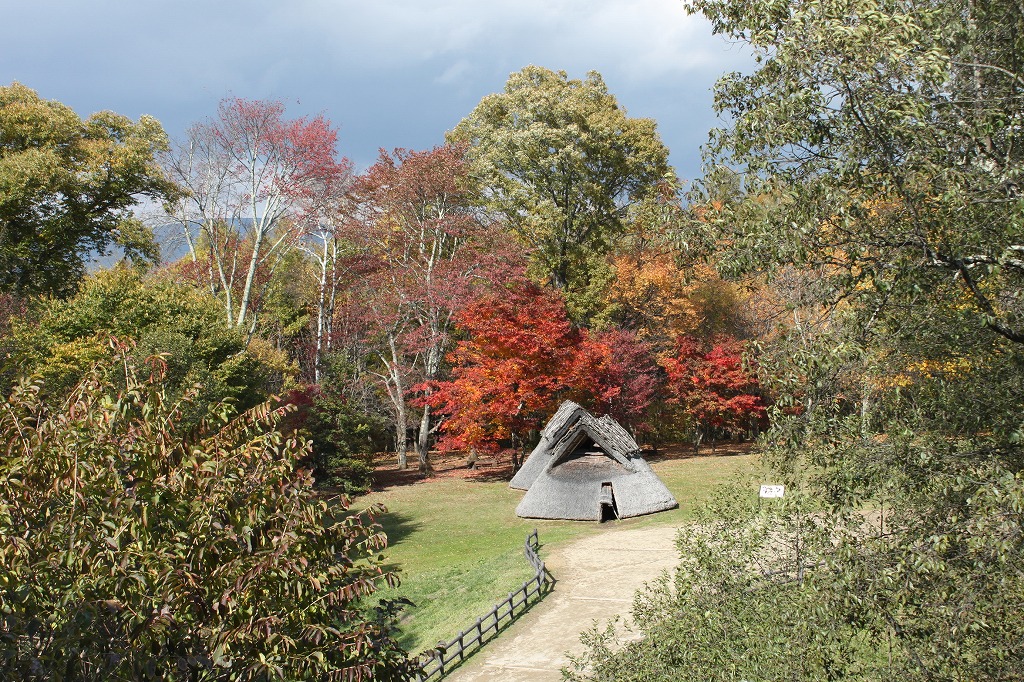

You can see the reconstructed houses in Yosukeone site from this museum.
More Information
- National Treasure "Dogu" part 1:"Jomon no Venus" (the Venus of Jomon)
- National Treasure "Dogu" part 2: "Kamen no Megami"(the Masked Goddess)
- The Jomon period: an outline
- Route bus timetables (Nov.4,2025~Apr.24,2026) [PDFファイル/202KB]
Map
Togariishi Museum of Jomon Archaeology
4734-132 Toyohira, Chino-shi
Telephone 0266-76-2270
(Tel intl +81-266-76-2270)
e-mail togariishi.m@city.chino.lg.jp
